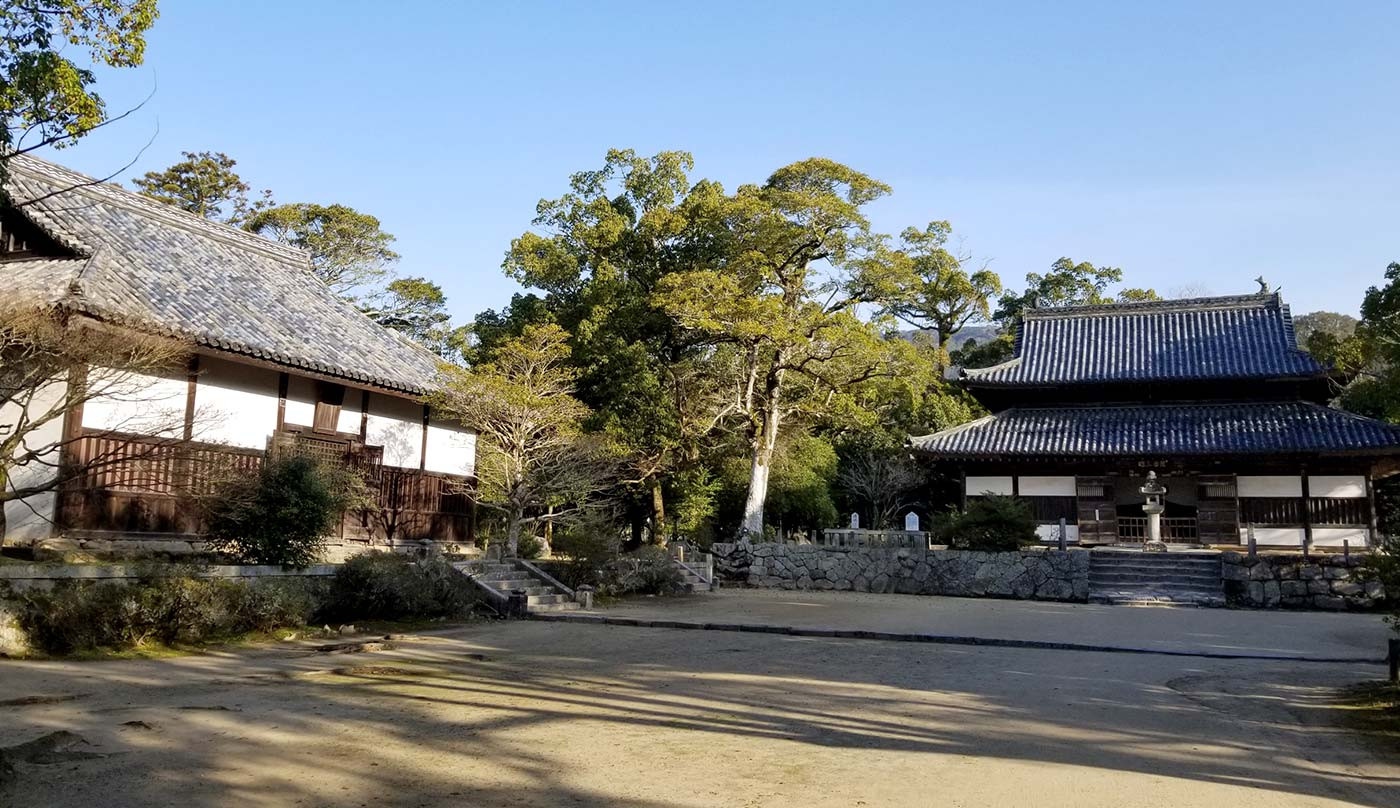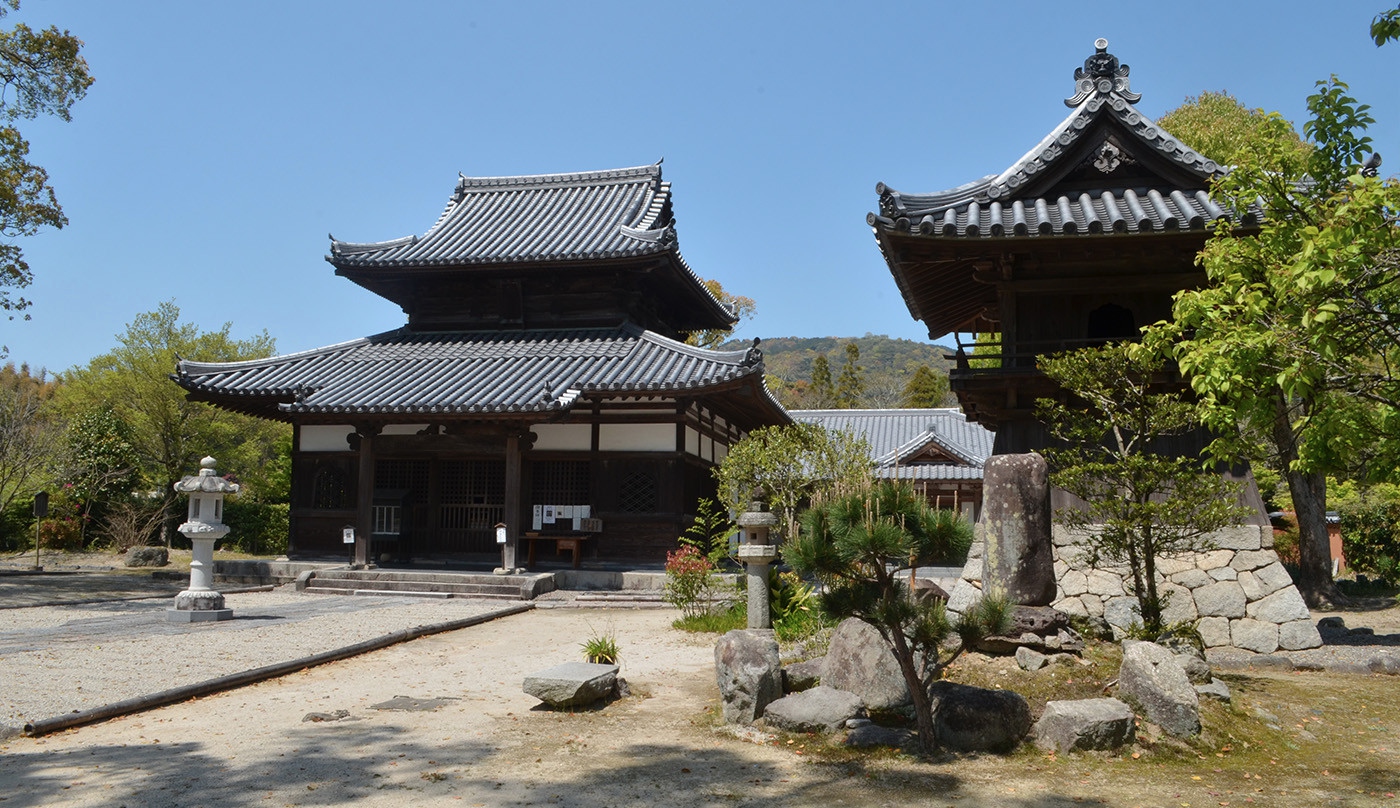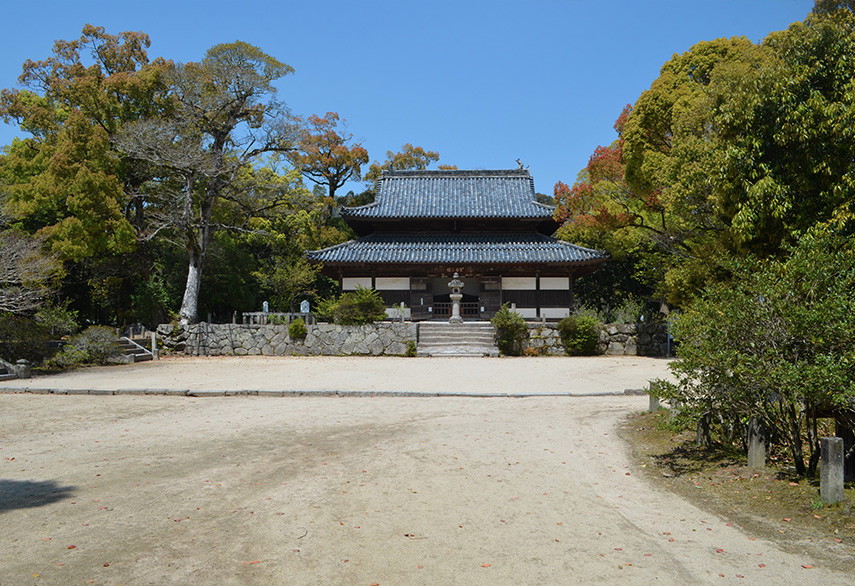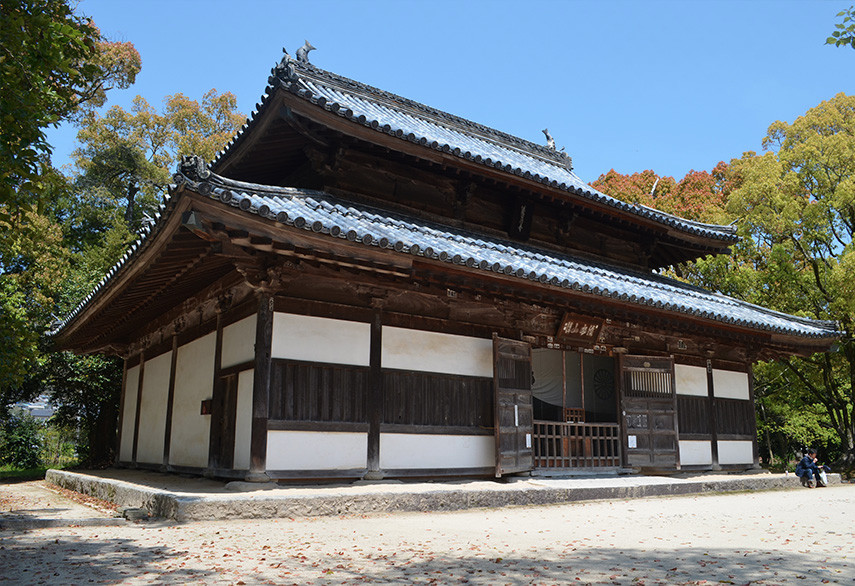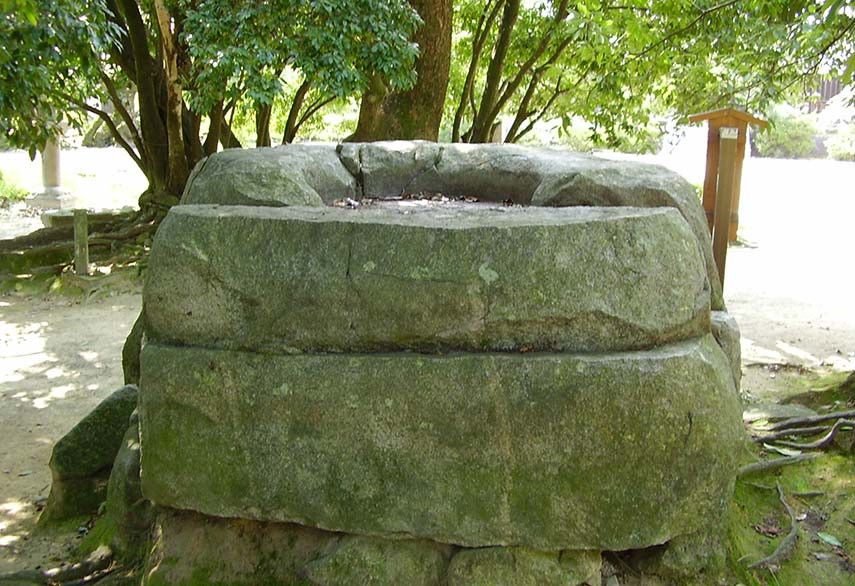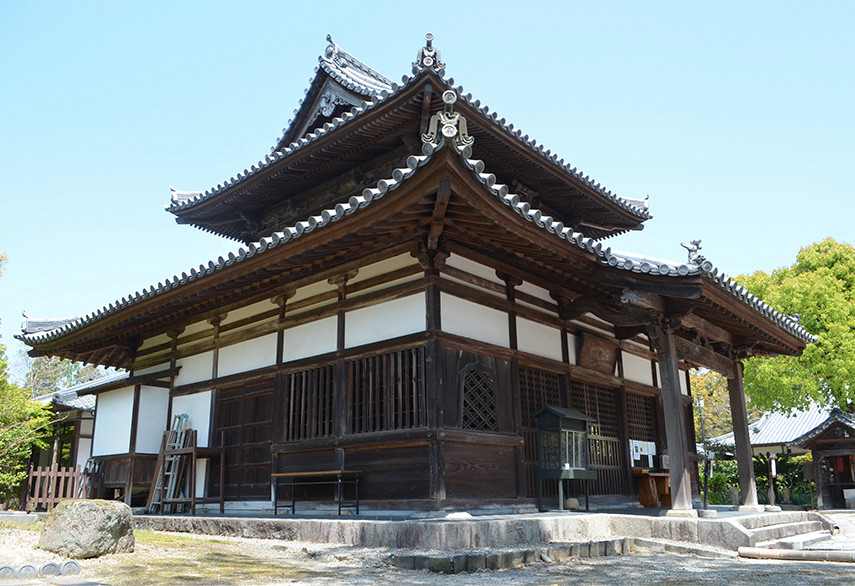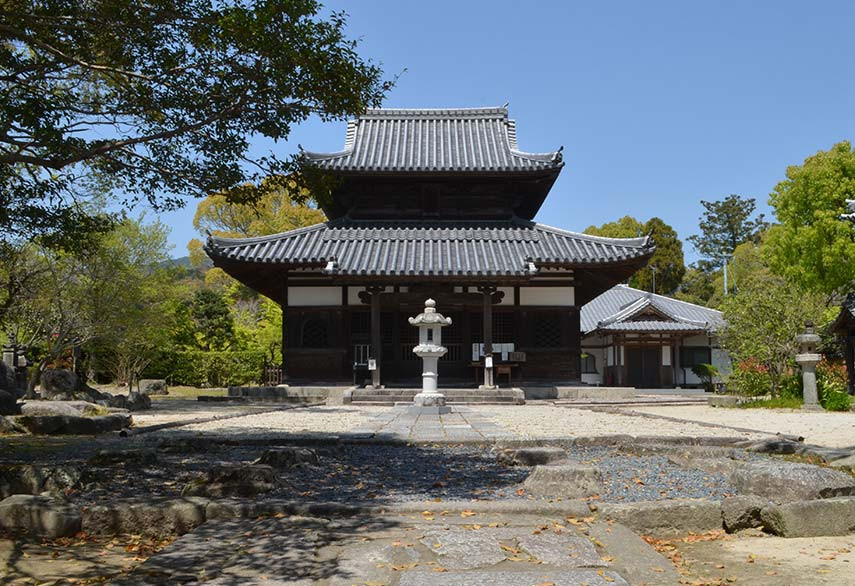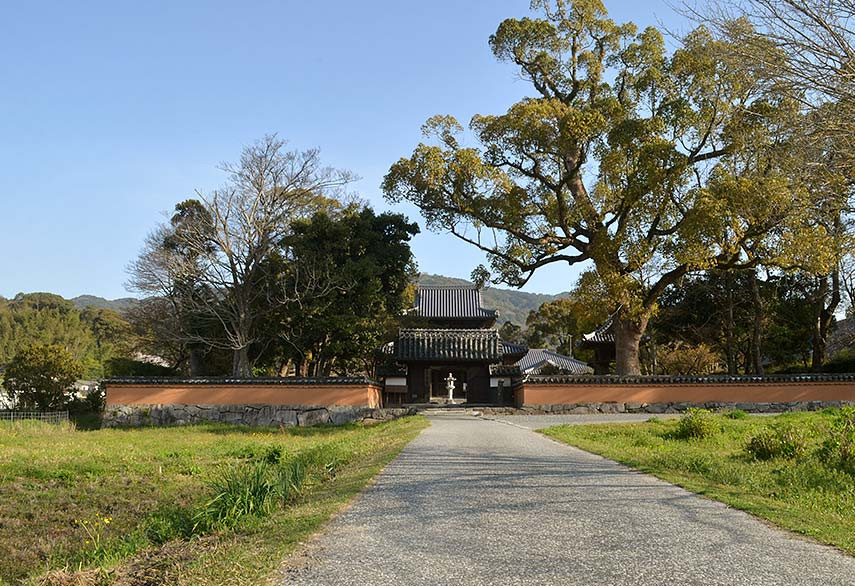
Kanzeon-ji & Kaidai-in Temple
| Location | City of Dazaifu |
|---|---|
| Designation | National Historical Site (Kanzeonji precinctand sub-temples ruins,attached Roji tile kiln ruins) National Important Cultural Property(Sculpture) Prefecturally Important Tangible Cultural Prop |
| Emblem |  |
This temple was built in the memory of the late Empress Saimei by her son, Emperor Tenji. There were as many as 49 sub-temples in the area, and even now foundation stones from temple buildings remain, giving evidence to the prosperity of this temple in ancient times. The temple had a Bugaku band that played music and performed dances that originated on the continent. Some masks of Bugaku Ryo-o and Nasori (a nationally important cultural property) still remain. Also remaining is a burial mound for Priest Genbo, who conducted the Buddhist memorial service that marked the completion of the temple. Ganjin, a priest of the Tang dynasty and Kukai a priest who went to the Tang dynasty stayed here. The first commandments of Japanese Buddhism were likely delivered here, helping to make this temple one of the three official ordination halls in Japan. An ordination hall still operates at Kaidan-in. The 16 Buddhist statues placed in the temple (nationally important cultural properties) were sophisticated images made during the Heian and Kamakura periods, indicating that Buddhist culture continued to flourish in this area.
Even now, Kanzeon-ji (the Main Hall and Lecture Hall are prefecturally important tangible cultural properties) and Kaidan-in (the Main Hall, Bell Tower and Bell are prefecturally important tangible cultural properties) stand to pass down the light of Buddhism to current generations.
Kanzeon-ji Temple, a large provincial temple
Kanzeon-ji Temple was built at the behest of Emperor Tenji to memorialize Empress Saimei, who died while staying in Chikushi to help Baekje. However, construction of this great temple was difficult, and it wasn’t completed until 746. Kaidan-in Temple as established in a section of the temple grounds in 761, solidifying its position as a great temple of Dazaifu. Go up the promenade and pass through the large south gate and the middle gate to find a lecture hall in front and a main temple hall to the left, then the remains of a five-storied pagoda to the right. While all of these structures have later been rebuilt, standing among them on these tranquil temple grounds will call to mind the monks Jianzhen and Kukai during their stay here. In the treasure hall are many statues from the Heian to the Kamakura Period that tell the story of the rise of Kanzeon-ji Temple.
Three Ordination Halls
In 761, an ordination hall called Kaidan-in was built at Kanzeon-ji Temple, also called the “Great Temple of Dazaifu”. Reclaimed land was added to the southwest corner of the Kanzeon-ji Temple grounds by surrounding only the structures of Kaidan-in. First established in 755 by Jianzhen at Todaiji Temple, when it became difficult for him to travel to Yamato (now Nara) from distant lands, he established an ordination hall at Kanzeon-ji on Saikai-do (Kyushu) area and at Shimotsuke Yakushi-ji Temple to the east. This is why they are called the Three Ordination Halls. Ordination at Kaidan-in was more difficult than current national exams, but passing them allowed a person to become a high priest.

Dazaifu City Characters/Tabito the Traveler, Otomo no Tabitto, Princess Reiwa
Be sure to visit the Kanzeon-ji Treasure Hall, where you can view Buddhist art representing ancient Kyushu (¥500 admission).
Shadows of the ancient past remain in these temple grounds, where you’ll find a five-storied pagoda, ancient cornerstones around a lecture hall, and Tengai, a stone mill from the Tenpyo Period (729-749) in front of the lecture hall.
Use the free smartphone application “Dazaifu, the Western Capital” to view what the temple grounds once looked like in VR. (Compatible with iOS and Android)
Inside the main hall of Kaidan-in is a statue of the Rushana Buddha, the same buddha enshrined at Todaiji Temple in Nara. Behind Kaidan-in is the tomb of the monk Genbo, whom Emperor Xuanzong of Tang sent a purple monk’s robe.
* Dazaifu City Wi-Fi, a public Wi-Fi network, is available within Kanzeon-ji and Kaidan-ji Temple grounds.
Access Information
Address
Kanzeon-ji Temple:818-0101 5-6-1 Kanzeonji, Dazaifu, Fukuoka
Kaidan-in Temple:818-0101 5-7-10 Kanzeonji, Dazaifu, Fukuoka
By Train
About 9 min on foot from Nishitetsu Gojo Station
By Car
About 20 min from the Dazaifu IC on the Kyushu Expressway


About the Western Capital
The “Western Capital”, created in Tsukushi 1300 years ago. Cultural assets speaking to the magnificence of this city of international exchange that flourished in East Asia are scattered across the cities of Chikushino, Kasuga, Onojo, Dazaifu, Nakagawa, and Umi in Fukuoka Prefecture as well as the town of Kiyama in Saga Prefecture.

